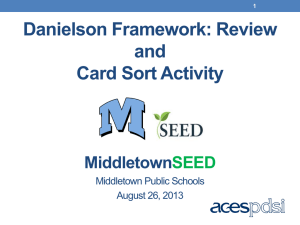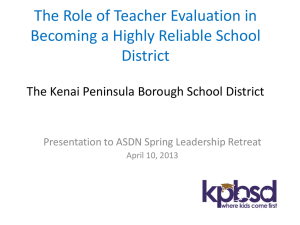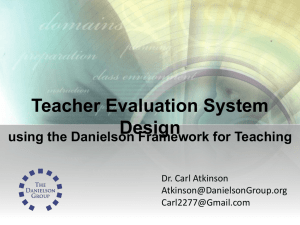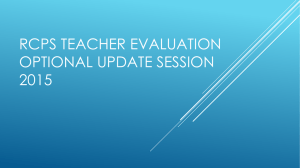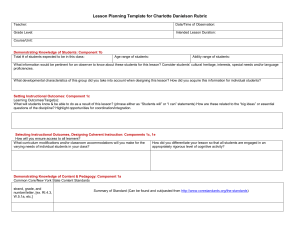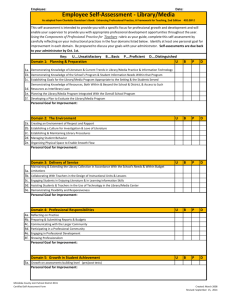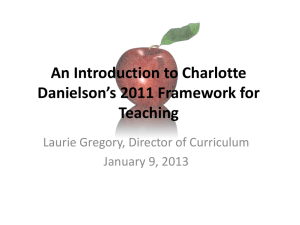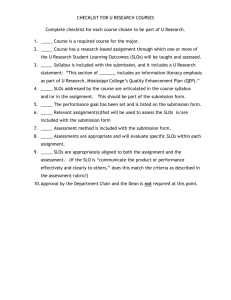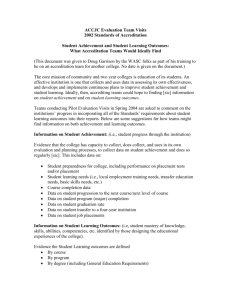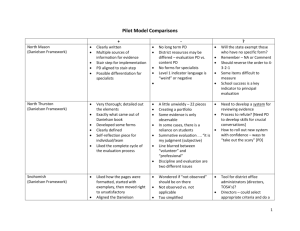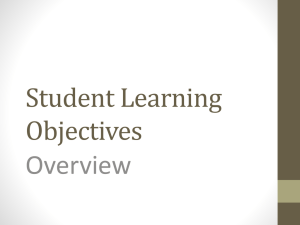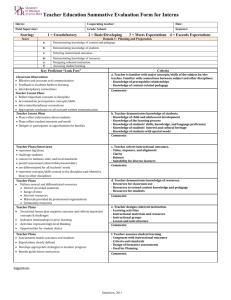Danielson Framework for Teaching: BCPS Implementation
advertisement
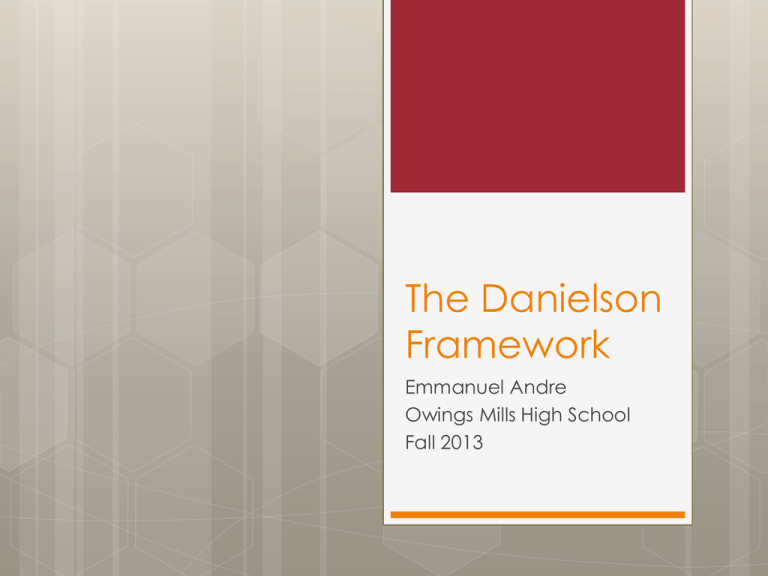
The Danielson Framework Emmanuel Andre Owings Mills High School Fall 2013 Why is this happening? The Danielson Framework, as it is being implemented in BCPS, is intended to increase objectivity and consistency from school to school within our system. Why is this a good thing? Teaching is an extremely complex activity, this framework is useful in laying out the various areas of competence in which professional teachers need to develop expertise. (www.andrews.edu) This means that it measure the WHOLE teacher, not just the person that is seen 4 times a year. It is a much more authentic reflection of what you do every day. What does it look like? - 4 Domains - 4 Tiers of Evaluation - Clear Expectations Components Danielson Group 2012 Domain 1: Planning and Preparation •Demonstrating Knowledge of Content and Pedagogy •Demonstrating Knowledge of Students •Setting Instructional Outcomes •Demonstrating Knowledge of Resources •Designing Coherent Instruction •Designing Student Assessments Domain 2: The Classroom Environment •Creating an Environment of Respect and Rapport •Establishing a Culture for Learning •Managing Classroom Procedures •Managing Student Behavior •Organizing Physical Space Domain 4: Professional Responsibilities •Reflecting on Teaching •Maintaining Accurate Records •Communicating with Families •Participating in a Professional Community •Growing and Developing Professionally •Showing Professionalism Domain 3: Instruction •Communicating with Students •Using Questioning and Discussion Techniques •Engaging Students in Learning •Using Assessment in Instruction •Demonstrating Flexibility and Responsiveness Workbook page 3 Performance Levels In each domain, we will be rated as… Then Unsatisfactory Satisfactory Now Ineffective Effective Developing Effective Highly Effective How will this affect me? Qualitative 50% Performance 4 domains. in the Everything discussed so far. Quantitative 50% Student learning outcomes(SLOs) School progress index State testing data Student Learning Outcomes (SLO) SLOs are a way to measure student growth by establishing learning goals Used for a wide variety of teaching assignments Adaptable Can measure individual, group or school performance Good instructional practice Essential Components of SLOs Level of objective Student population included Timeframe for evaluating progress toward the objective Assessment used to measure progress Assessment baseline Expected student growth Strategies for achieving growth School Index Achievement State testing results Gap Gap between lowest and highest subgroups Growth/College and Career Readiness Percent of students making one year’s growth/Graduation Rate/Career Attainment/Attendance Formal Observations New Pre- Observation Tool New Post Observation Tool New Formal Observation Tool Aligned to Framework for Teaching New Evaluation Cycle 3 year cycle 2 formative years 1 Formal observation and informal observation data Professional Growth Plan evidence Rating from last summative year and narrative Student Learning Outcome evidence summative year 3 years of Observation Evidence 3 years of Student Learning Outcome data School Performance Index data State Testing data Activity In order to better understand the Qualitative portion of the evaluation we will now take part in an activity focused on the Formal Observation Rubric. If not already, split into 8 groups Open the envelope given to you Define the component in your own words Respond to the scenario as a teacher at every level (Ineffective-Highly Effective) Use the rubric to help you. Gallery Walk Post your posters around the room Using the ½ sheets of paper take notes on the traits of highly effective teachers vs. those of ineffective teachers
